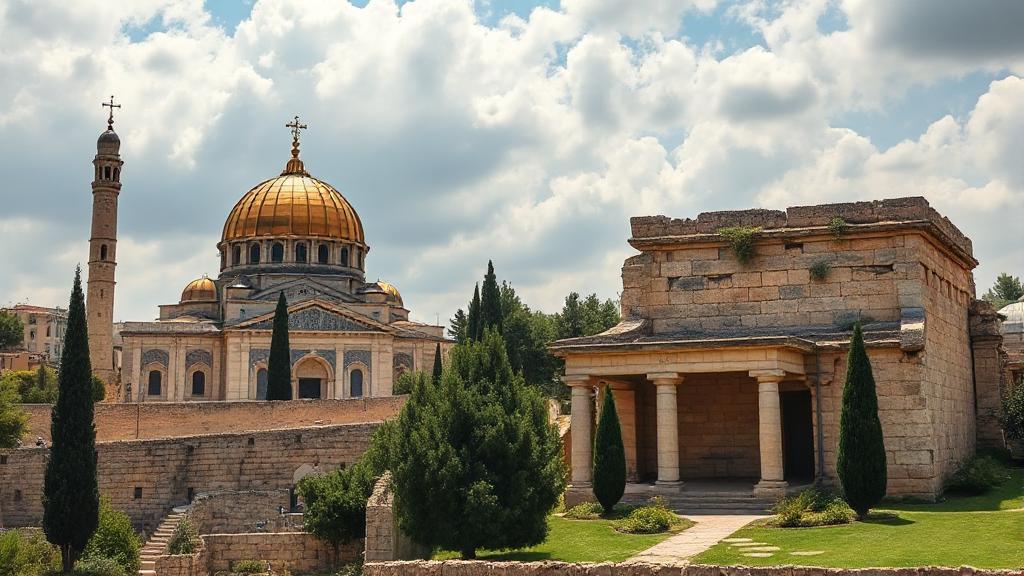Introduction
The quest to pinpoint the exact location of Jesus Christ's tomb has intrigued scholars, theologians, and pilgrims for centuries. Two primary sites in Jerusalem have emerged as the most likely candidates: the Church of the Holy Sepulchre and the Garden Tomb. Each site offers a unique historical and spiritual narrative, drawing visitors from around the world.
The Church of the Holy Sepulchre
Historical Background
Located in the Christian Quarter of Jerusalem's Old City, the Church of the Holy Sepulchre has been venerated as Christ's burial site since the 4th century. Emperor Constantine's mother, Helena, identified this location during her pilgrimage to Jerusalem in 326-328 CE. Constantine subsequently ordered its construction.
Archaeological Evidence
Recent archaeological findings have strengthened the case for this traditional site:
- The tomb's limestone bed dates to the 1st century CE
- The surrounding rock-cut tombs align with Jewish burial customs of the period
- The site was outside Jerusalem's walls during Jesus' time
- Evidence of early Christian veneration has been discovered beneath the church
Architecture and Religious Significance
The church is a complex structure, housing several chapels and shrines. It is shared by multiple Christian denominations, including the Greek Orthodox, Armenian Apostolic, and Roman Catholic churches. The Edicule, a small shrine within the church, is believed to enclose the tomb of Jesus. Recent renovations have revealed ancient limestone bedrock, supporting claims of its authenticity.
The Garden Tomb
Discovery and Location
Discovered in the 1880s by General Charles Gordon, the Garden Tomb is located just outside the walls of Jerusalem. It gained popularity among Protestant Christians due to its peaceful garden setting that seems to match biblical descriptions better than the ornate Church of the Holy Sepulchre.
"Now in the place where he was crucified there was a garden, and in the garden a new tomb in which no one had yet been laid." - John 19:41
Features and Challenges
The Garden Tomb offers several compelling features:
- Located near a cliff resembling a skull (potentially Golgotha)
- Situated in a garden setting
- Contains a rock-cut tomb
- Located outside the city walls
However, modern archaeology has presented some challenges:
Visitor Experience
Both locations offer distinct experiences:
| Site | Atmosphere | Access | Religious Services |
|---|---|---|---|
| Holy Sepulchre | Traditional, ornate | Often crowded | Regular masses |
| Garden Tomb | Peaceful, natural | More relaxed | Protestant services |
Scholarly Consensus
Most archaeologists and historians favor the Church of the Holy Sepulchre as the more likely location, based on:
- Continuous historical tradition
- Archaeological consistency with 1st-century burial practices
- Location relative to ancient Jerusalem's walls
- Early Christian architectural remains
Recent studies, including the 2016 restoration project led by the National Technical University of Athens, have provided additional evidence supporting the Church of the Holy Sepulchre's authenticity.
Conclusion
Both the Church of the Holy Sepulchre and the Garden Tomb hold profound significance for Christians worldwide. Whether one site is more authentic than the other remains a matter of personal belief and scholarly debate. Ultimately, these sites serve as powerful reminders of the life, death, and resurrection of Jesus Christ, offering pilgrims a chance to connect with their faith in a tangible way.
For more information, visit:
